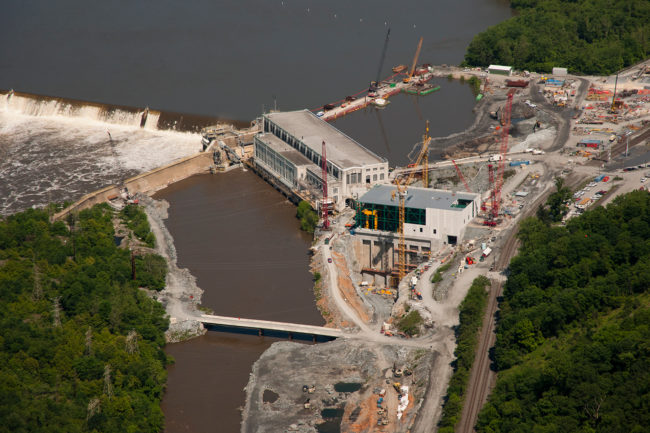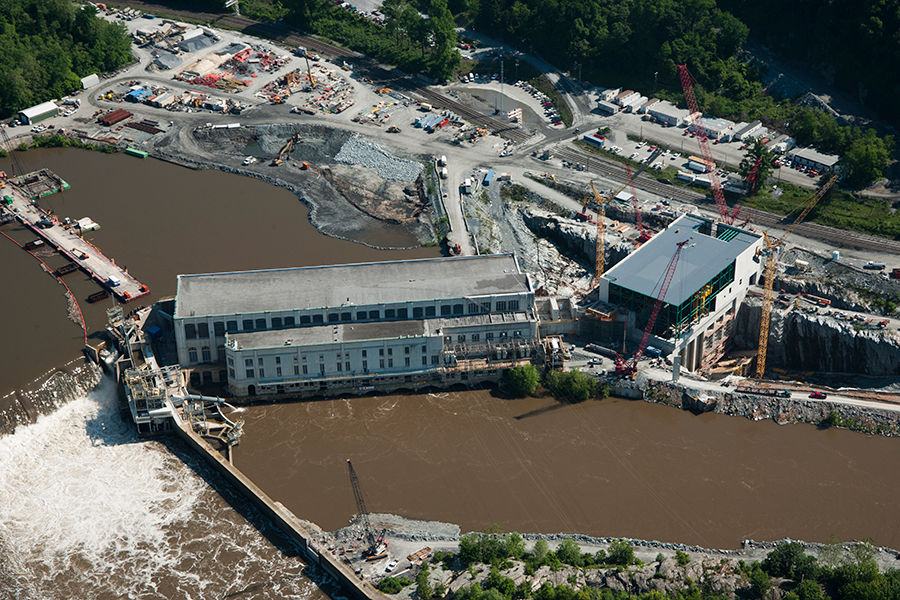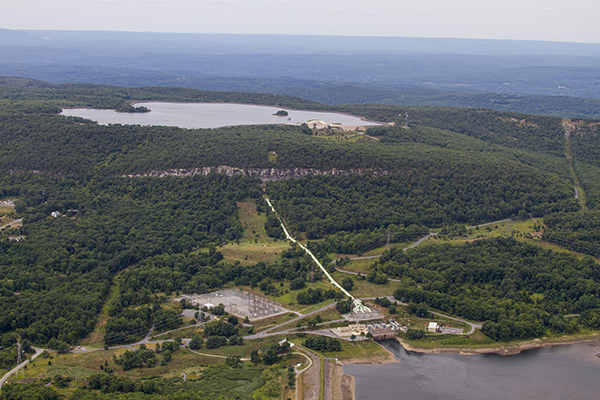
Why hydro?
Hydropower is renewable because it draws its essential energy from the sun which drives the hydrological cycle which, in turn, provides a continuous renewable supply of water. It also provides an option to store energy, to optimize electricity generation. Hydropower’s storage capacity and fast response characteristics are especially valuable to meet sudden fluctuations in electricity demand and to match supply from less flexible electricity sources and variable renewable sources. Hydropower is the most proven, efficient, flexible and reliable source of electricity based on more than a hundred years of experience.

Hydro Facts
As of 2010, hydropower represents more than 88 percent of all renewable energy generated in the world, and continues to stand as one of the most viable sources of new renewable generation into the future. One-third of all countries generate at least 50% of their electric power from hydro. The U.S. Energy Information Administration predicts that 55% of the new global renewable energy production will come from hydroelectric plants by 2035.

Most hydroelectric stations use either the natural drop of a river, such as a waterfall or rapids, or a dam is built across a river to raise the water level and provide the drop needed to create a driving force.
Water at the higher level is collected in the reservoir or forebay. It flows through the station’s intake into a pipe, called a penstock, which carries it down to a turbine. The turbine is a type of water wheel that is connected to a generator. As the water flows down the penstock the water pressure increases. It is this pressure and flow that causes the turbine to revolve which in turn spins a generator.
In 1878 the world’s first hydroelectric power plant was developed in Northumberland, England by William George Armstrong. It was used to power a single lamp in his art gallery. The old Schoelkopf Power Station No. 1 near Niagara Falls on the U.S. side began to produce electricity in 1881. The first Edison hydroelectric power plant, the Vulcan Street Plant, began operating September 30, 1882, in Appleton, Wisconsin, with an output of about 12.5 kilowatts. By 1886 there were 45 hydroelectric power plants in the U.S. and Canada. By 1889 there were 200 in the U.S. alone.
By 1920, as much as 40% of the power produced in the United States was hydroelectric, and the Federal Power Act was enacted into law. The Act created the Federal Power Commission to regulate hydroelectric power plants on federal land and water. As the power plants became larger, their associated dams developed additional purposes to include flood control, irrigation, and navigation.
Owner’s continued to develop larger hydroelectric power plants throughout the 20th century. Hydropower was referred to as white coal for its power and plenty. Hoover Dam’s initial 1,345 MW power plant was the world’s largest hydroelectric power plant in 1936; it was eclipsed by the 6809 MW Grand Coulee Dam in 1942. The Itaipu Dam opened in 1984 in South America as the largest, producing 14,000 MW but was surpassed in 2008 by the Three Gorges Dam in China at 22,500 MW.
Not long after the turn of the twenty-first century, hydropower development gained a renewed momentum, particularly across Asia and South America. Between 2000 and 2017, nearly 500 GW in hydropower installed capacity was added worldwide, representing an increase of 65 percent, with growth since 2010 already outstripping that recorded in the first decade of the century. Due to its multiple services and benefits, hydropower is expected to remain the world’s largest source of renewable electricity for years to come and with significant untapped hydropower potential; much of the sector’s future growth is expected to come from Africa and Asia.
Hydropower is a versatile, flexible technology that at its smallest can power a single home, and at its largest can supply industry and the public with renewable electricity on a national and even regional scale. In terms of generation capacity, hydro accounts for eight of the world’s ten biggest power stations.
There are four broad hydropower typologies:
Run-of-river hydropower: a facility that channels flowing water from a river through a canal or penstock to spin a turbine. Typically a run-of-river project will have little or no storage facility. Run-of-river provides a continuous supply of electricity (baseload), with some flexibility of operation for daily fluctuations in demand through water flow that is regulated by the facility.
Storage hydropower: typically a large system that uses a dam to store water in a reservoir. Electricity is produced by releasing water from the reservoir through a turbine, which activates a generator. Storage hydropower provides baseload as well as the ability to be shut down and started up at short notice according to the demands of the system (peak load). It can offer enough storage capacity to operate independently of the hydrological inflow for many weeks or even months.
Pumped-storage hydropower: provides peak-load supply, harnessing water which is cycled between a lower and upper reservoir by pumps which use surplus energy from the system at times of low demand. When electricity demand is high, water is released back to the lower reservoir through turbines to produce electricity.
Offshore hydropower: a less established but growing group of technologies that use tidal currents or the power of waves to generate electricity from seawater
These technologies can often overlap. For example, storage projects can often involve an element of pumping to supplement the water that flows into the reservoir naturally, and run-of-river projects may provide some storage capability.

What is Pumped Storage Hydro?
In order to provide a continuous flow of electricity, energy storage will prove to be essential. Wind and solar vary throughout the course of the day and batteries tend to be small and offer limited hours of electricity. The answer is pumped hydropower energy storage. Water is pumped uphill from one reservoir to another at a higher elevation for storage, and when power is needed, it releases the water downhill to the turbines.
To learn more check out this article from The Conversation.
Hydro Challenges
All forms of renewable energy impact the environment in various ways. Although hydroelectric power is one of the cleanest sources of energy, it does alter or impact its surroundings. One of the chief concerns is the change in water quality. Specifically, with conventional hydro plants that rely on a reservoir, water often becomes warmer, loses oxygen content, experiences siltation, and gains in phosphorous and nitrogen content.
Another major issue is the migration of river aquatic life. Many species of fish including salmon, shad and sturgeon migrate up or downstream to spawn every year and dams can block their natural range. Fish ladders, fish lifts and other upstream and downstream fish passage techniques are being utilized to enable fish and other aquatic life to pass dams and hydroelectric facilities. This issue is a concern for all dams, including hydroelectric facilities.
The majority of the opposition to hydroelectric facilities centers on new developments that dam a river for the first time. These challenges may include the need to relocate people, the loss of culturally important sites, loss of land, methane gas emissions from decaying material in a new reservoir, siltation and downstream flow shortages. This challenge also impacts new water supply reservoirs that are being developed to provide drinking water as our population expands. Due to these reasons and several others, most hydroelectric development in the U.S. is currently focused on existing non-powered dams.
The dam and hydro profession today is a multi-disciplinary body including environmental specialists, ecologists, biologists, social scientists and economists. Together they represent a wealth of expertise which can ensure that future projects are planned, constructed and operated with full respect for society and the environment.
Kleinschmidt is proud to have supported the Deschutes Valley Water District and all of its project partners though the development of this important project, which will reconnect over 120 miles of habitat for anadromous and native migratory fish species. This collaborative effort brought many diverse interests together and overcame multiple regulatory, funding, and engineering challenges.
This is a good overview of the Mactaquac Generating Station and the role hydropower plays in Canada’s energy mix. Kleinschmidt is providing strategic and technical expertise to help New Brunswick Power identify potential improvements to fish passage and explore ways of incorporating these solutions into Mactaquac’s future.
